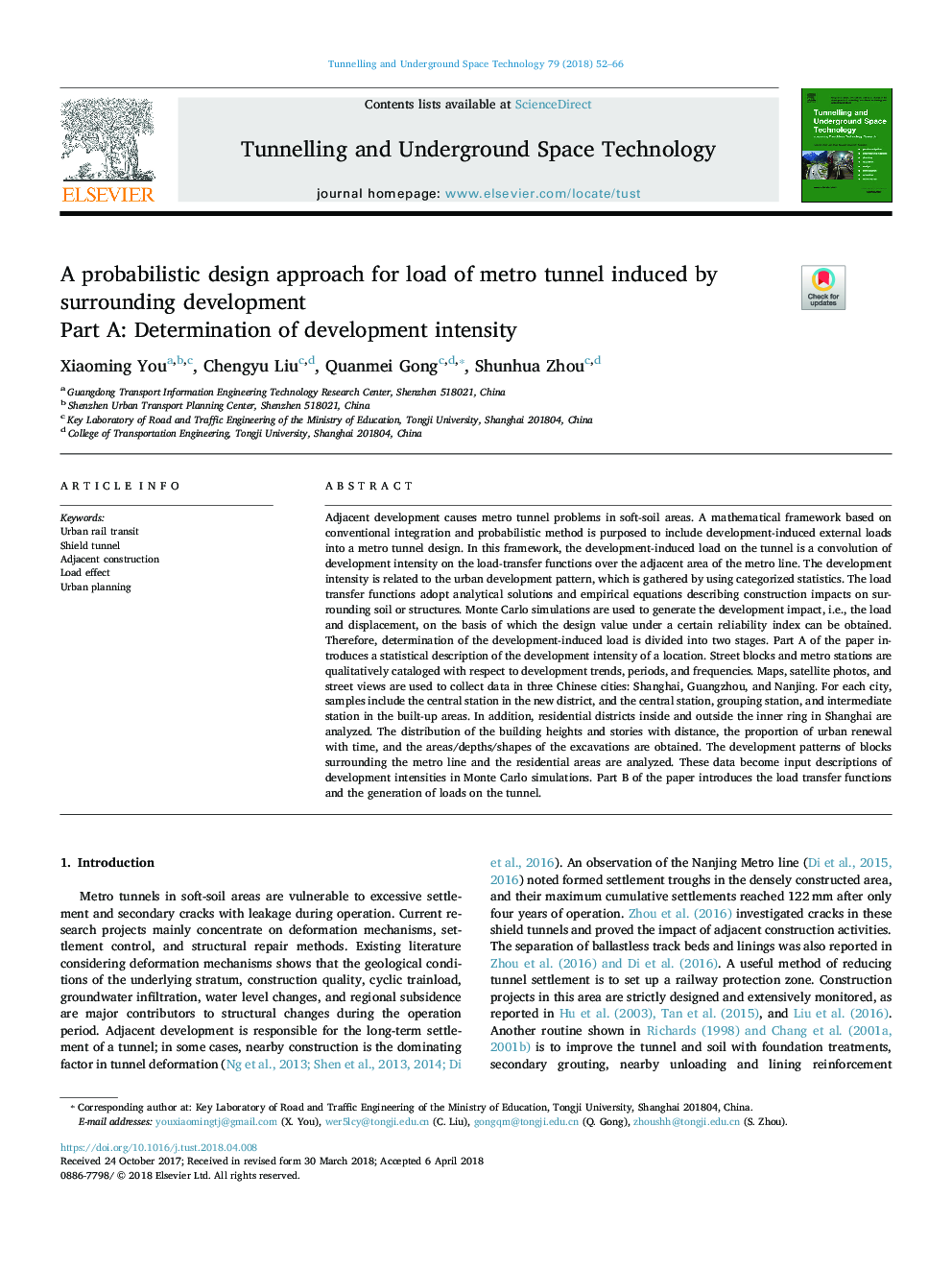| Article ID | Journal | Published Year | Pages | File Type |
|---|---|---|---|---|
| 6782189 | Tunnelling and Underground Space Technology | 2018 | 15 Pages |
Abstract
Adjacent development causes metro tunnel problems in soft-soil areas. A mathematical framework based on conventional integration and probabilistic method is purposed to include development-induced external loads into a metro tunnel design. In this framework, the development-induced load on the tunnel is a convolution of development intensity on the load-transfer functions over the adjacent area of the metro line. The development intensity is related to the urban development pattern, which is gathered by using categorized statistics. The load transfer functions adopt analytical solutions and empirical equations describing construction impacts on surrounding soil or structures. Monte Carlo simulations are used to generate the development impact, i.e., the load and displacement, on the basis of which the design value under a certain reliability index can be obtained. Therefore, determination of the development-induced load is divided into two stages. Part A of the paper introduces a statistical description of the development intensity of a location. Street blocks and metro stations are qualitatively cataloged with respect to development trends, periods, and frequencies. Maps, satellite photos, and street views are used to collect data in three Chinese cities: Shanghai, Guangzhou, and Nanjing. For each city, samples include the central station in the new district, and the central station, grouping station, and intermediate station in the built-up areas. In addition, residential districts inside and outside the inner ring in Shanghai are analyzed. The distribution of the building heights and stories with distance, the proportion of urban renewal with time, and the areas/depths/shapes of the excavations are obtained. The development patterns of blocks surrounding the metro line and the residential areas are analyzed. These data become input descriptions of development intensities in Monte Carlo simulations. Part B of the paper introduces the load transfer functions and the generation of loads on the tunnel.
Related Topics
Physical Sciences and Engineering
Earth and Planetary Sciences
Geotechnical Engineering and Engineering Geology
Authors
Xiaoming You, Chengyu Liu, Quanmei Gong, Shunhua Zhou,
